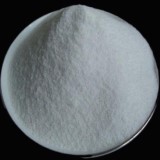|
|
|
Phenoxyethanol ---- Phenyl Ethanol ---- Phenyl Mercuric Acetate ---- Phenyl Mercuric Nitrate ---- Polyvinyl Acetate ---- Polyvinyl Alcohol ---- Polysorbate ---- Propionic Acid ---- Propyl Gallate ---- Propylene Glycol ---- Propylparaben ---- Propylene Carbonate ---- Butylated Hydroxyanisole |
|
Polyvinyl Alcohol SDS MSDS of Manufacturers & Exporters
Polyvinyl Alcohol SDS, Safety Data Sheet 1. PRODUCT DESCRIPTION Product Name & Other Names: Polyvinyl Alcohol or Poly(Vinyl Alcohol) or PVA or PVOH. 2. HAZARD IDENTIFICATION GHS, Globally Harmonized System Classification in accordance with 29 CFR 1910 Not a hazardous substance or mixture according to Regulation (EC) No. 1272/2008. Labeling as per GHS & Regulation EC 1272/2008 (CLP) & GHS
Signal Words: None Precautionary statements: 3. COMPOSITION/INFORMATION ON INGREDIENTS Product Name & Other Names: Polyvinyl Alcohol or Poly(Vinyl Alcohol) or PVA or PVOH. 4. FIRST AID MEASURES Always get medical attention after the first aid is over. Emergency and First Aid Procedures: 5. FIREFIGHTING PROCEDURES Extinguisher Media: Use media suitable to extinguish surrounding fire. Use water spray, alcohol-resistant foam, dry chemical, or carbon dioxide. 6. SPILL OR LEAK PROCEDURES Personal precautions, protective equipment, and emergency procedures: Avoid breathing dust/fumes/gas/mist/vapors/spray. Use individual protective equipment (waterproof boots, suitable protective clothing, safety glasses, etc.).Do not approach facing the wind. 7. SPECIAL PRECAUTIONS Precautions for safe handling: Apply according to good manufacturing and industrial hygiene practices. Ensure proper ventilation. In case of insufficient ventilation, wear suitable respiratory equipment. Wash thoroughly after handling. Do not drink, eat, or smoke while handling. Avoid contact with skin, eyes, and clothing. Minimize dust generation. Avoid breathing dust/fumes/gas/mist/vapors/spray. Keep container tightly closed. Avoid ingestion and inhalation. Use individual protective equipment (waterproof boots, suitable protective clothing, safety glasses, etc.). Prevent any contact with hot surfaces. 8. SPECIAL PROTECTION INFORMATION Exposure Limits: This product does not contain any hazardous materials with occupational exposure limits established by the region-specific regulatory bodies. There is a blanket recommendation of 10 mg/m3 for inspirable dusts or mists when limits have not otherwise been established. 9. PHYSICAL DATA Appearance: Solid material granules, crystals or powder. 10. REACTIVITY DATA Stability: Polyvinyl Alcohol is stable 11. TOXICITY DATA Acute toxicity: 12. ECOLOGICAL DATA Toxicity to fish: LC50 >1000mg/liter over 48 hours exposure on killfish. 13. DISPOSAL INFORMATION Waste Disposal Methods: Dispose Polyvinyl Alcohol in accordance with all applicable Federal, State and Local regulations. 14. TRANSPORT INFORMATION Land Transport DOT USA, TDG Canada & ADR/RID Europe: Not controlled. 15. REGULATORY INFORMATION USA: 16. ADDITIONAL INFORMATION DISCLAIMER: The information and recommendations set forth herein (hereinafter "Information") are presented in good faith and believed correct as of the date hereof. It is compiled from various sources, and it is not necessarily all inclusive nor fully adequate in every circumstance. In addition, these suggestions should not be confused with nor followed in violation of applicable laws, regulations, rules, or insurance requirements applicable. This SDS MSDS sheet is intended only as a guide to the appropriate precautionary handling of the material by a professionally trained person using this product. Individuals receiving the information must exercise their independent judgment in determining its appropriateness for a particular purpose. This shall not constitute a guarantee for any specific product features and shall not establish a legally valid contractual relationship. In no case shall our company be liable to loss or damages by the product user. |
Crystal Clear Products and the group companies are manufacturing chemicals since several decades. We have automatic vacuum operated titanium evaporators and SS316 equipments to produce top grade of chemical products. We have toll manufacturers and representatives in China, UAE, Europe, Canada & USA and agents & customers in all countries like USA, Canada, Europe, UAE, South Africa, Tanzania, Kenya, Egypt, Nigeria, Uganda, Turkey, Mexico, Brazil, Chile, Argentina, Bangkok Thailand, Kaula Lumpur Malaysia, Dubai UAE etc. & sales representative in Chicago, Houston New York & Los Angeles, USA. Associated units are FDA-GMP certified, Halal and/or Kosher certified, REACH registered, ISO-9001, ISO-22000 HACCP certified, Crisil Rated.
Contact Polyvinyl Alcohol IP BP Ph Eur EP JP USP NF ACS Analytical Reagent FCC Food Grade manufacturers exporters at:

Crystal Clear Products
Plot No-C1-1031-9, GIDC Estate, Panoli, Ankleshwar, Gujarat - 393002. India
Telephone Mobile: 91-7506449333; e-mail: info@crystalclearproducts.org
e-mail: info@crystalclearproducts.org
Manufacturers, Suppliers of IP BP Ph Eur EP JP USP NF FCC Food, ACS Reagent GMP Grades of Chemicals like Polyvinyl Alcohol




